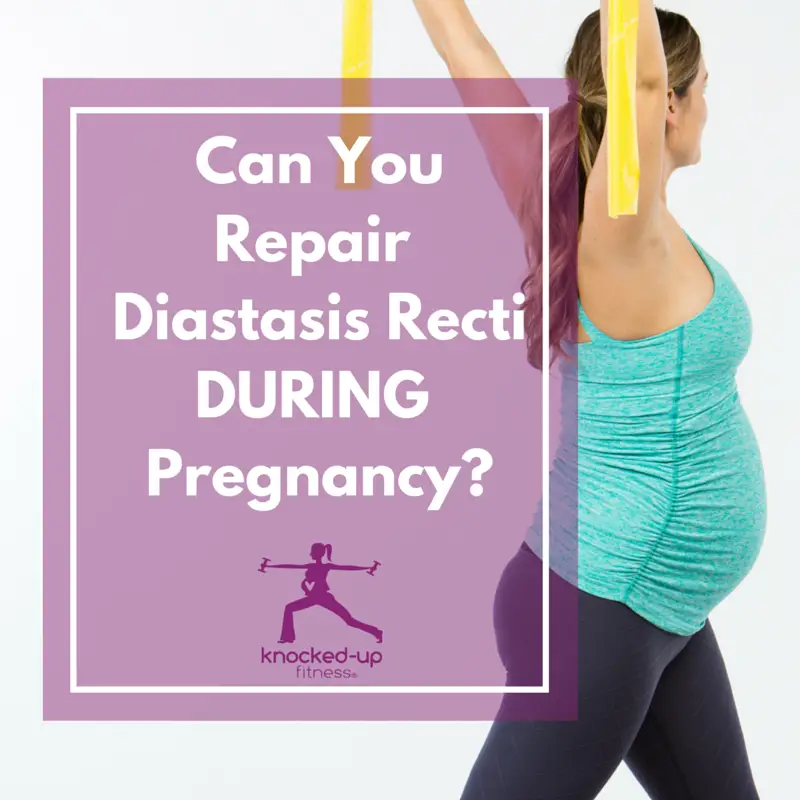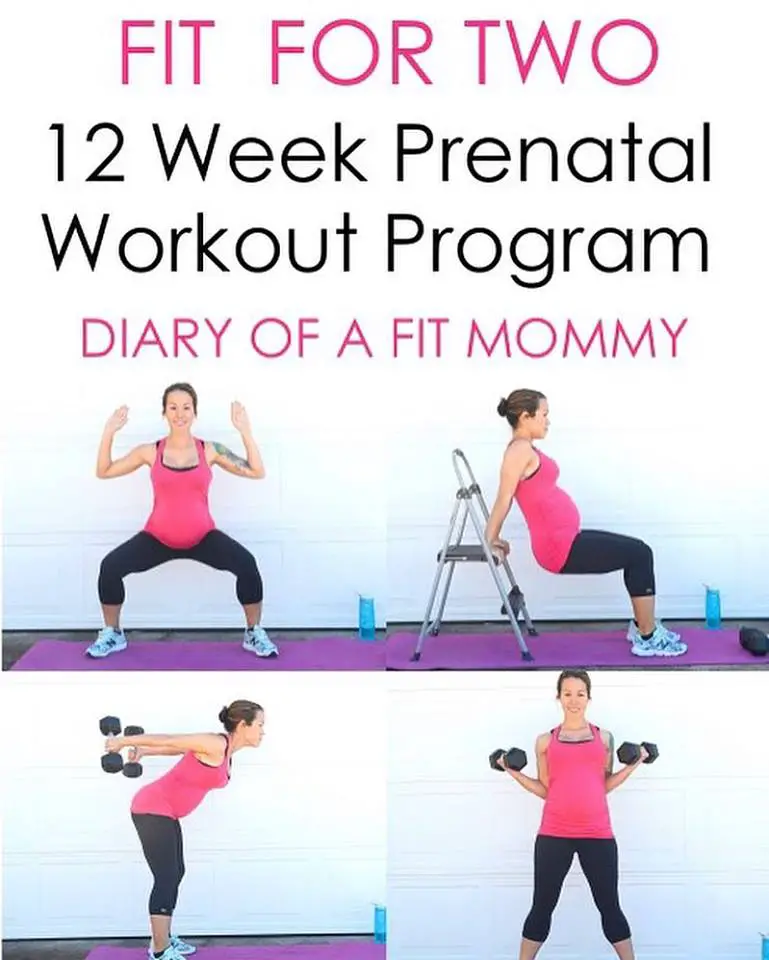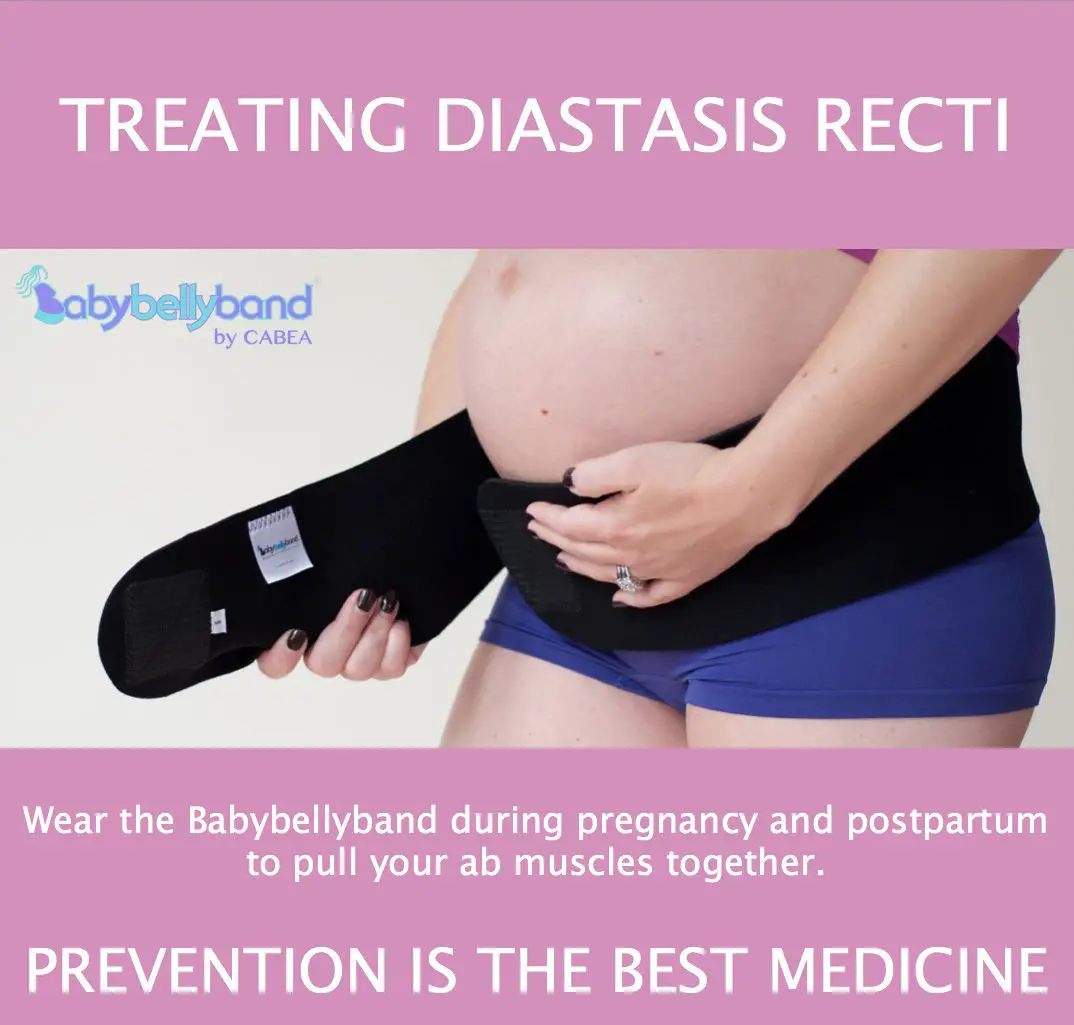Is Diastasis Recti Problematic
Since we all have some separation between our abdominals already, what is the significance of having a wider gap? Surprisingly, clinical research has lagged in this area, but is starting to accumulate.
The key problem caused by diastasis recti appears to be that the separation in your abdominal muscles decreases functional abdominal strength . A paper published recently identified a correlation between muscle weakness and the size of the gap below the belly button the larger the gap, the weaker the muscles .
Interestingly, new research is accumulating that suggests that the depth of the gap between the muscles may be a better indicator of an abdominal functional deficiency than the width of the gap. A deeper gap would reduce the ability of the connective tissue in the gap to work with the muscles to create tension across the abdomen. For this reason, pelvic floor physiotherapists will assess both the width of the gap and the depth during an evaluation.
Weakened abdominals diminish overall abdominal integrity and can lead to other related problems such as low back pain, pelvic girdle pain, and pelvic instability . This is not surprising since the pelvic floor muscles work in concert with the abdominal muscles to allow load to be transferred effectively through the pelvis. When this fails to function properly, women with diastasis recti may experience pelvic floor related problems such as incontinence or prolapse .
How Long Will It Take To Heal My Diastasis Recti
The amount of time it takes to heal diastasis recti depends on the amount of ab separation and how consistent you are with strengthening exercises. After several weeks postpartum, this gap will start to close as your muscles regain strength. If you’re making modifications to your lifestyle and performing exercises with good form, you’re more likely to notice progress.
Healthy Abdominal Support During Pregnancy
The best way to reduce your chances of severe diastasis recti is to protect the integrity of the linea alba as much as possible. You can do this by properly recruiting your deep core muscles in all sorts of movements.
Rather than bearing down in order to tighten your stomach, use your exhale to recruit your pelvic floor muscles first, and then draw your abdominals in toward the midline from all sides, as if hugging your baby closer to your spine.
During exercise, make sure to use modifications when needed if you cant maintain support against intra-abdominal pressure, scale back.
Also, be aware of how you move throughout your day.
When you recline on a chair or couch, sit up after lying on your back, or even lean back to wash your hair in the shower, you may often place a higher demand on your core and increase your intra-abdominal pressure, putting pressure on the linea alba and causing it to weaken.
But if you can properly engage your core prior to that increase in pressure, you can prevent the connective tissue of the linea alba from stretching beyond a natural, healthy level of separation during pregnancy.
You May Like: How To Get Medicaid While Pregnant
How Should I Proceed
It is safest and most effective to seek out the advice of a health care practitioner trained to treat diastasis recti, such as a Physiotherapist trained in Pelvic Floor Physiotherapy. Incorrect exercises or exercises incorrectly performed can be ineffective, or at worst, counterproductive and harmful. Your therapist should be able to create a targeted home exercise therapy program customized to your needs, and safely guide you through your rehabilitation.
What Movements Make Diastasis Recti Worse

Any movement that bulges the abdominal wall forward can cause more damage to your diastasis recti. Everyday movements like getting out of bed or up off a chair can worsen diastasis. Try to be mindful about how you are using your abdominals as you go about your day.
These exercise movements should be avoided if you have diastasis recti:
- Crunches or sit-ups of any kind.
- Planks or push-ups .
- Downward dog, boat pose and other yoga poses.
- Double leg lifts, scissors and other Pilates moves.
- Any exercise that causes your abdominals to bulge, cone or dome.
Don’t Miss: How To Get Pregnant After 40 Fast
How Do I Prevent Diastasis Recti
Some abdominal separation is normal and expected with pregnancy. There are some things you can do to lower your risk for developing diastasis recti:
- Healthy weight gain during pregnancy: Exercising and eating healthy foods to keep weight gain within a healthy range.
- Proper posture and deep breathing: Stand up straight with your shoulders back. Take deep breaths that allow your ribs to expand and not just your belly.
- Safe core exercises: Avoid exercises like sit-ups and crunches that put pressure on your abdominals after 12 weeks of pregnancy and postpartum.
- Don’t strain while lifting: Certain day-to-day activities like lifting grocery bags or your children can put undue strain on your abdominals.
- Log roll when getting out of bed: If you’re pregnant or postpartum, roll to one side and use your arms to push up out of bed.
What Can I Do About My Diastasis Recti
- Your posture helping you to maintain a relaxed, neutral spine.
- How you move avoiding movements that increase intra-abdominal pressure. For example, it’s better for you to roll onto your side to get up from a lying down position, and to avoid straining on the toilet.
- Your breathing using your diaphragm and widening your ribcage when you breathe.
- Exercises that strengthen your inner core, including pelvic floor exercises, before moving on to exercises for your outer core.
Don’t Miss: Can You Get Pregnant Anytime
How To Know If You Have Diastasis Recti During Pregnancy:
1. Look at Your Belly Button: If the belly button bulges out, that can indicate Diastasis Recti.
2. Look at Your Bump: If you can visibly see a gap around the belly button and above and below it, that can indicate Diastasis Recti.
3. Traditional test:
- Lay on your back with your knees bent and your feet flat on the floor.
- Exhale and lift your head and shoulders off the floor put one hand behind your head to support your neck.
- Make sure you contract your rectus abdominis muscle bring your rib cage closer to your hips, rather than just bringing up your head.
- Place your fingers in a horizontal position across your belly button and feel above, over, and below the belly button. Assess the width and depth of the gap. It is also relevant if there is a gap and how firm or loose the sheath under the belly button feels.
- If the width of the gap is more than 2 cm , you have Diastasis Recti.
If you do have Diastasis Recti during pregnancy, or to try to limit the risk of you getting Diastasis Recti, there are several steps you can take:
What Is The Rectus Abdominis Muscle
The rectus abdominis muscle is made up of two parallel muscles separated by a band of connective tissue called the linea alba.
These muscles start at the rib cage and extend down to the pubic bone at the front of the pelvis.
They form part of a group of abdominal muscles, which support the trunk of your body, help keep your body stable and balanced, and protect your spine.
You May Like: How To Get Enough Calcium During Pregnancy
What Is Abdominal Separation
Some women find their stomach muscles weaken and separate during and after pregnancy. This is known as abdominal separation, diastasis recti or recti divarication. It is a common condition and often gets better in the first 8 weeks after having your baby.
Abdominal separation occurs when the growing uterus causes the 2 long, parallel muscles of your stomach to separate from each other. These muscles run from your chest to your pelvis, just under the skin, down the middle of your belly.
Abdominal separation is partly due to the pressure of your growing baby, and partly due to the hormonal changes that take place during pregnancy. It usually starts in the second half of pregnancy.
Abdominal separation is more common in women who have had more than 1 child, are aged over 35 or who are having twins or triplets . It can also occur in a small-statured woman who is having a larger-than-average baby.
It is sometimes known as DRAM .
How To Prevent Diastasis Recti
This is a complex question that we get often: how can I avoid diastasis recti? The reality is anyone can get diastasis recti its not just a pregnancy or postpartum condition. Rather than make statements like dont gain too much weight in pregnancy or dont do crunches, our approach is focused much more on what you can and should do.
Our Pregnancy Programs are designed to support your body through its natural changes, and make it easier on you to return to healthy function after birth. While it may not be possible to completely prevent diastasis recti, it is possible to set yourself up for a smoother postpartum healing period and a faster return to your daily activities and fitness regimen.
A core tenant of our prenantal workout program is teaching you how to engage your tranverse abdominis the deepest core muscles, which act as a corset around your abdomen, stabilizing the pelvis and spine. Once you know how to activate your transverse abdominis, youre halfway there to healing.
You May Like: When Do You Start Losing Hair After Pregnancy
How To Check For Diastasis Recti
You can also check for diastasis recti in the comfort of your own home. Heres how to do it:
If you dont feel any open space between your abdominal muscles as you lift your head, you may not have diastasis recti.
In general, experts says that if you’re able to fit two or more more fingers in that space, you have diastasis recti. Dont be surprised if you can fit several fingers into that spacewide diastasis recti is also common.
What Are The Causes

Excessive inner-abdominal pressure causes diastasis recti. During pregnancy, your abdominal muscles and connective tissues are stretched out from your expanding uterus. Theyre helped along by the pregnancy hormones relaxin and estrogen. Pushing during delivery can also lead to diastasis recti. Experiencing some abdominal separation during and following pregnancy is expected.
In the past, body mass index , weight gain during pregnancy, weight of the baby, and maternal age were considered risk factors. But a 2015 study found no connection between these factors and pregnant women being more or less likely to experience the condition.
Newborn babies are sometimes born with diastasis recti, especially if theyre premature. Thats because their abdominal muscles arent fully developed and connected. The condition usually corrects itself with time.
Recommended Reading: Can You Get Insurance If You Are Already Pregnant
Can Exercise Treat Diastasis Recti
Diastasis recti is conventionally treated through targeted exercise therapy, specifically abdominal exercise. Clinical studies are still few and small , but exercise does show promise for both preventing and reducing diastasis recti . This supports what I and other pelvic floor physiotherapists are taught, and also see in clinical practice.
The general rationale behind abdominal exercise is that it can generate a horizontal force that will act to close the abdominal gap. Two new studies of diastasis recti show that certain muscle contractions can act to bring the abdominals closer together, giving support to the notion that strengthening ones abdominal muscles will act to hold the sides together during rest as well . But the type of exercise matters, as some abdominal exercises may actually pull the sides further apart . Further studies are needed to tease out these specifics and we will be following this research closely.
How Can I Tell If I Have Diastasis Recti
- Lie on your back, with your knees bent and your feet flat on the floor or bed.
- Place your palm down on your tummy, just below or above your belly button.
- Lift your shoulders off the floor slightly and look down at your stomach. With the tips of your fingers, feel between the edges of the muscles, both above and below your belly button.
- See how many fingers you can fit into the gap between the muscles. The number of finger widths is the size of your diastasis. Do the test regularly – as your muscles get stronger, the gap reduces.
Read Also: How Can I Not Get Pregnant The First Time
Can I Fix The Diastasis Recti While Pregnant
There are many factors during pregnancy that can lead to diastasis recti.
Some of these, such as poor posture, are easily fixed others for example, being pregnant with multiples are unavoidable.
Many women dont have any symptoms but no amount of exercise and dieting improves their belly.
Exercising when you have diastasis recti means you could be relying on other muscles to do the work your core should be doing. Over time, this instability could lead to injury.
If you are dealing with abdominal separation during pregnancy, exercises such as planks, crunches and burpees arent recommended. These exercises place a lot of internal pressure on already weakened muscles.
With so much conflicting information on the Internet, it can be hard to know which are the correct exercises to do.
Thats why its a good idea to seek the advice of your care provider or someone who specializes in womens health or physiotherapy.
Is A Diastasis Recti Support Belt During Pregnancy Helpful
A support belt during pregnancy might be helpful for diastasis recti, but there is no concrete data on its effectiveness.
Support belts are meant to be tight to bring your muscles closer together, so in theory, they might be able to help.
However, a belt or a waist trainer should not take the place of a proper core strengthening regimen.
In addition, some women might find support belts to be very bothersome.
Experiment for yourself and see if a support belt is comfortable for you.
Recommended Reading: What Are All The Signs Of Being Pregnant
What Should I Do About Diastasis Recti After I Have My Baby
The reality is that your belly will keep growing and protuding between these muscles during pregnancy, so after you have the baby is a great time to build back up those muscles, and bring them back together.
Once youve had your baby, the pain from diastasis recti should go away on its own. However, you may still have a gap between your abdominal muscles.
If you want to close the gap, there are a few things you can do. You can try:
-Exercises that target the transverse abdominis muscle
You should ease into these exercises, and check with your provider before jumping into doing these. They will probably recommend easing into it rather than a huge ab workout as soon as you feel ready.
-A belly wrap or binder or a girdle
As I said before this is only good if its causing you a great deal of pain, but most likely you need to work these muscles MORE not less. However, if youre in a lot of pain from it this can help .
You can also talk to your doctor about surgery, although this is usually only recommended if you have a significant amount of tissue protruding from the gap or if youre experiencing chronic pain.
So, thats one of the less fun parts of pregnancy explained. If you want to learn more about your pregnancy and delivery from a trusted source, check out The Online Prenatal Class for Couples where we prepare you for a confident, collaborative hospital delivery in just a few hours.
- About the Author
Pelvic Tilts On Hands And Knees
Also Check: Can You Take Weight Loss Pills While Pregnant
Preventing A Natural Separation From Becoming An Injury
What often leads to an injury-based diastasis is an inability to manage the outward pressure thats placed on the linea alba as the belly grows and stretches. So the pressure tries to escape in the easiest and most available place: out of your newly stretched midline. This causes whats commonly referred to as doming or coning.
This pressure, when not regulated, can weaken the over-stretched connective tissue, leading to damage and a lack of integrity that takes more time to rebuild. Whether its during functional, every day movements like getting out of bed, picking up your little one, or during exercise, every time doming or coning occurs, its more likely you are going to end up with an injury.
Protecting the integrity of the linea alba is everything when it comes to ending up with injury-based diastasis recti or not. The good news is that there are techniques to help manage the majority of pressure increases, like engaging your core and pelvic floor properly prior to any movement that causes a pressure increase.
Related: Simple breathing exercises to prepare your body for labor & delivery
Does Dram Get Worse With Each Successive Pregnancy

Good question. The answer is not necessarily as it will often depend on how well you recover in between each of your pregnancies. This includes how much you close the gap and how strong and functional your core is. And this is why I help you to strengthen your core after pregnancy with my Core Rehab for Mamas program.
18. Should you work on your separation during pregnancy or just wait until after birth?
What you do now when pregnant will have a significant impact on how well you recover after childbirth. So yes, I want you to include the right core exercises into your weekly prenatal fitness routine. This will all help you to recover better after birth!
Don’t Miss: What Can Cause Ectopic Pregnancy

